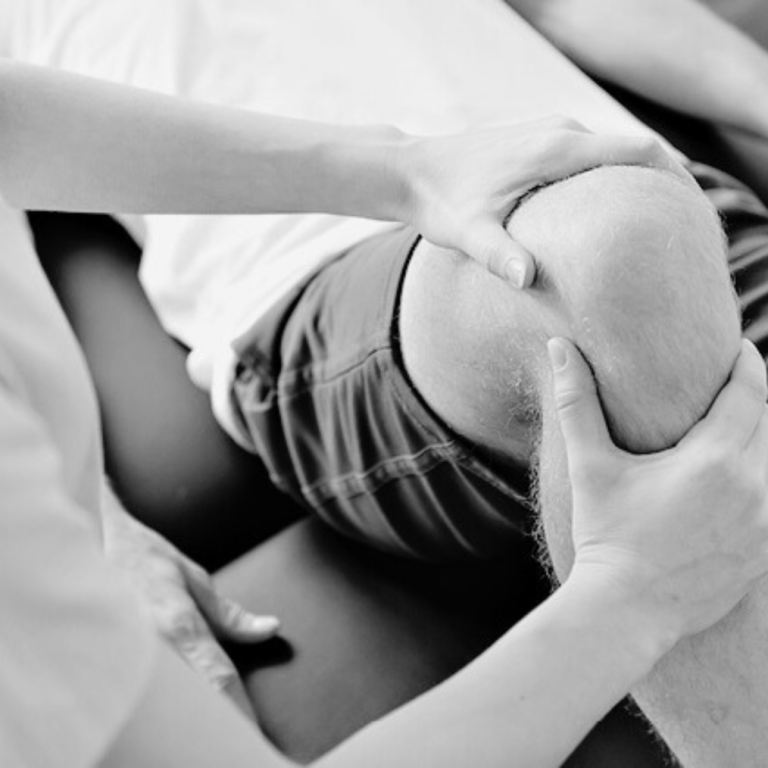
Meet The Team
Hannah Holloway
Musculoskeletal Injury Specialist
Hannah graduated from The University of Bolton with a BSc (Hons) Sport Rehabilitation in 2017 and has since become a Graduate Sport Rehabilitator.
During her time at University, she completed many hours of training and practice in both sport and private practice settings including Wigan Athletic FC Under 21s, Bury FC, Macclesfield Town FC and the Sports and Spinal Injury Clinic at the University itself allowing her to develop her clinical and hands-on skills to deliver high-quality treatments.
Alongside the numerous hours spent within injury settings, she has also spent a number years playing football and has used that knowledge to enhance her rehabilitation skills and help know what it takes to get patients back to a optimum level of function whether that be in day-to-day life or within a sporting setting.
Qualifications:
- BSc (Hons) Sport Rehabilitation
- Postgraduate Diploma of Higher Education in Sport Rehabilitation (PGDip)

What is Sport Rehabilitation?
Graduate Sport Rehabilitators help people who may be suffering from musculoskeletal pain or injury, whether that be recently or long-term symptoms. These do not have to be sporting-related injuries, every day issues can be treated by a sport rehabilitator.
The main aims of a Graduate Sport Rehabilitator is, first, to prevent injury or further injury, and second, to reduce pain, wherever that may be using various interventions ranging from manual-based, exercise-based or simple movements.
Further education and training can be used alongside your treatment plan in order for you, as the patient, to be more knowledgable on what may have caused your injury, how to look after it away from clinic and how certain changes may benefit you in the long run.
Graduate Sport Rehabilitators are set apart by their strong focus on biomechanics of the patient, exercise rehabilitation and making sure patients are returned to high levels of function.
What Could My Treatment Include?
Your treatment plan will involve everything from your initial assessment, therapeutic interventions which are evidence-based and also an exercise plan that will constantly be changed and developed as you get closer to returning to optimal function.
Examples of what could be included are:
- Exercise Rehabilitation
- Graded Activity
- Manual Therapies e.g. mobilisations, manipulations, deep transverse frictions
- Soft Tissue Massage
- Taping and Bracing
Your practitioner will use a complete and well-rounded approach to your treatment, taking into consideration the whole needs of you as an individual, to allow for full and optimal recovery. You, the patient, will always be the priority.
Sport Rehabilitators treat a range of injuries including:
- Back, Neck and Spinal Pain - lower back pain, sciatica, disc problems and more
- Pains and Sprains within joints - ankle, knee, shoulder, neck, groin, hip, etc.
- Post-operative Rehabilitation - spinal, knee and shoulder surgery and more
- Total Joint Replacement Rehabilitation - knee, hip and more
- Tendinopathies
- Ligament Reconstruction Rehabilitation
- Tennis/Golfers Elbow
- Carpal Tunnel Syndrome
- Bursitis
- Post-trauma, including fractures and dislocations
- Chronic Pain
- Repetitive Strain Injuries
Graduate Sport Rehabilitators are included within the General Medical Council Referral Guidelines and can take referrals from the wider healthcare community. Some of the potential populations they are trained to work with include:
- Osteo and Rheumatoid Arthritis
- Cancer
- Chronic Obstructive Pulmonary Disease (COPD)
- Mental Health and Dementia
- Cardiovascular Disease (stroke, heart disease, peripheral artery disease, hypertension)
- Obesity
- Older Populations (osteoporosis, sarcopenia, falls prevention)
- Pregnancy
- Living with chronic conditions
Are There Any Risks Associated With Treatment?
Your practitioner will always assess the risks and the benefits of the treatment plans and associated interventions they will use, as part of their patient-centred complete approach.
Any treatment interventions used within your treatment plan will always be evidence-based and will be based upon an accurate and effective clinical assessment. This, partnered with ongoing monitoring and detailing any progression throughout your rehabilitation is what drives the complete, well-rounded approach.
Examples of risk management that your practitioner will undertake are:
- Accurately assessing the healing stage or stage of recovery of your injury, illness or condition and the matching that with appropriate exercise rehabilitation.
- Effectively assessing the presence or potential probability of further underlying injuries or medical conditions before recommending an evidence-based interventions.
- Appropriately maintaining any equipment used for treatment according to manufacturer guidelines.
Any risks of individual interventions will be discussed with you by your practitioner, and will be referred on to other members of appropriate healthcare if deemed appropriate.
If a treatment plan or individual intervention does have an unforeseen consequence, e.g. taping/strapping or other manual treatment application might cause a skin reaction, then these unforeseen consequences are usually minor and your practitioner will identify them and respond by adapting the approach accordingly.
© Copyright. All rights reserved.
We need your consent to load the translations
We use a third-party service to translate the website content that may collect data about your activity. Please review the details in the privacy policy and accept the service to view the translations.
